AWS Certified AI Practitioner
Fundamentals of Generative AI
Basic Concepts of Generative AI tokens chunking embeddings and more
Welcome to this comprehensive lesson on generative AI. In this guide, you will gain an in-depth understanding of how generative AI works, from the fundamentals of tokenization to the intricacies of transformer architectures. Be sure to take notes along the way to maximize your learning.
Why Generative AI?
Generative AI has rapidly transformed industries since its emergence, becoming a force multiplier across a range of applications—from classification and text generation to image creation and human-like interactions. Leveraging pre-trained language models, generative AI enhances efficiency, personalization, and creativity for businesses.
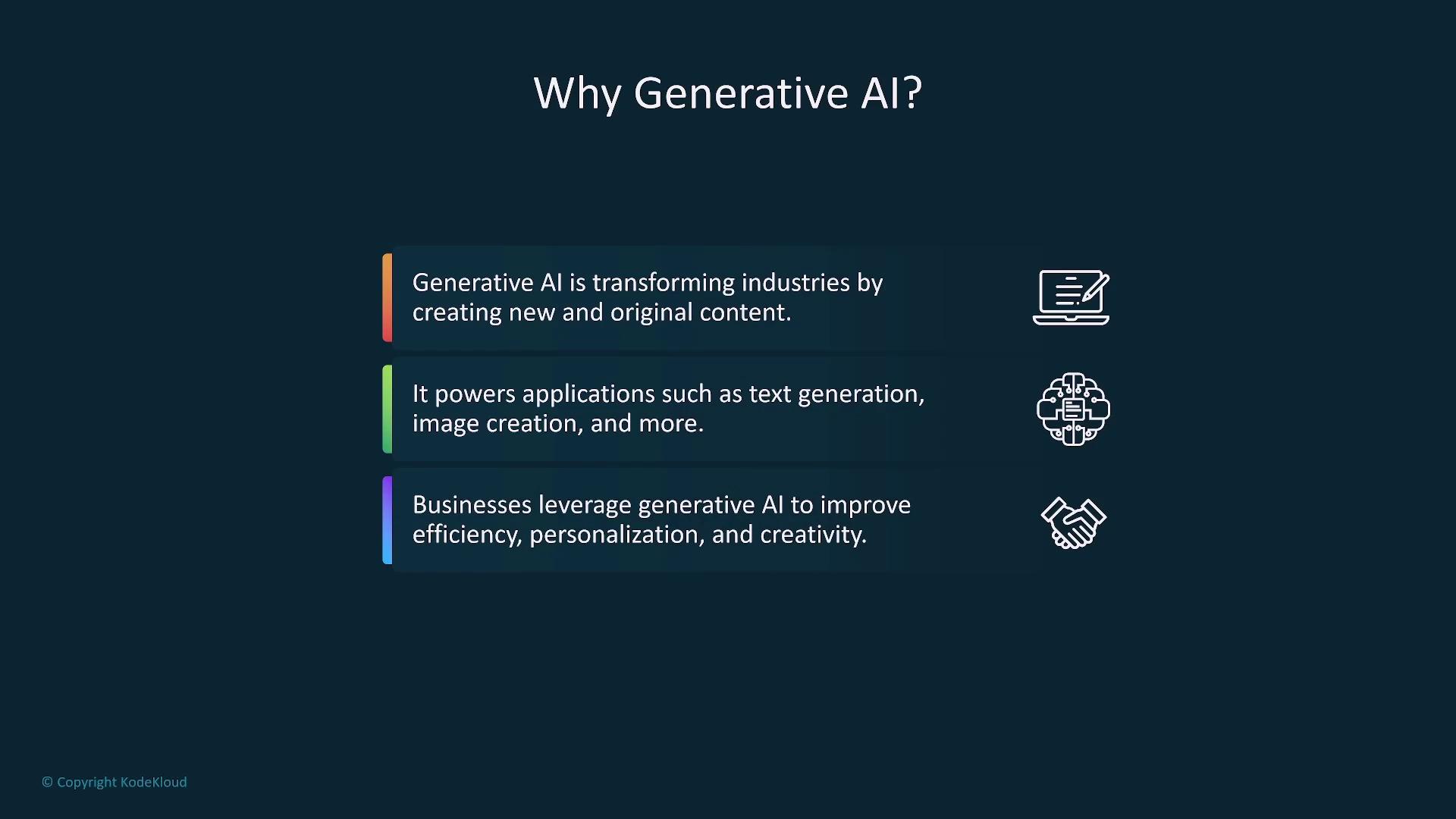
At its core, generative AI creates original content such as text, images, videos, or code by generating new outputs that mirror the patterns it learned during training. Unlike traditional AI, which makes predictions based solely on historical data, generative AI produces innovative and context-aware solutions.
AI Models and the Transformer Architecture
AI models are algorithms trained on massive datasets to recognize and replicate patterns. Neural networks form the foundation of these models, allowing them to handle diverse data types including text, images, and videos. For instance, when generating text, models predict the next token (or minimal word unit) based on prior context and relational patterns.
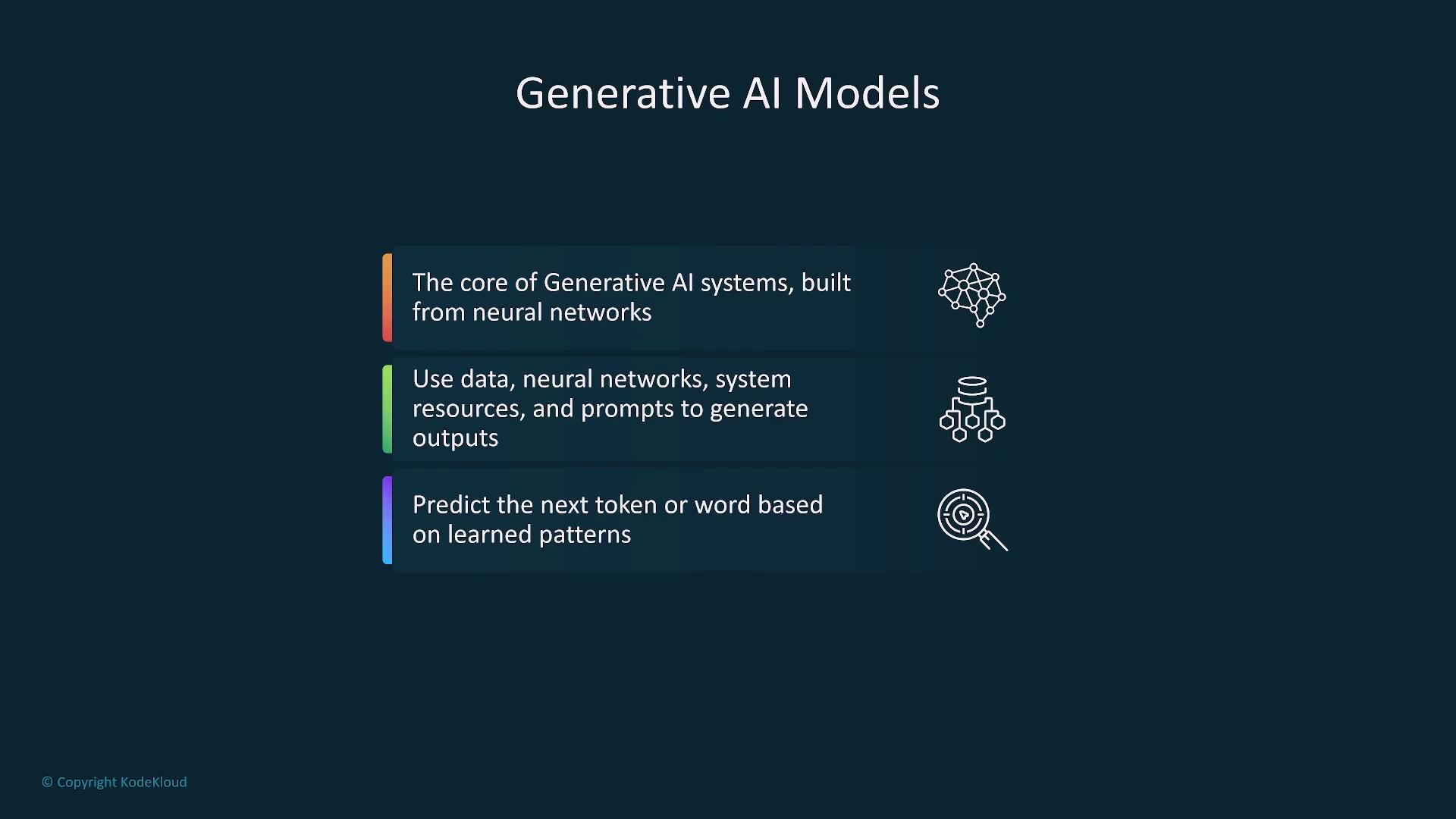
A standout advancement in this field is the transformer network, defined by its "Attention Is All You Need" approach. Transformers efficiently process large sequences of data—such as full paragraphs—in parallel, making them far more powerful than previous recurrent neural network architectures. This parallel processing is instrumental in breaking down lengthy input sequences into smaller, manageable parts.
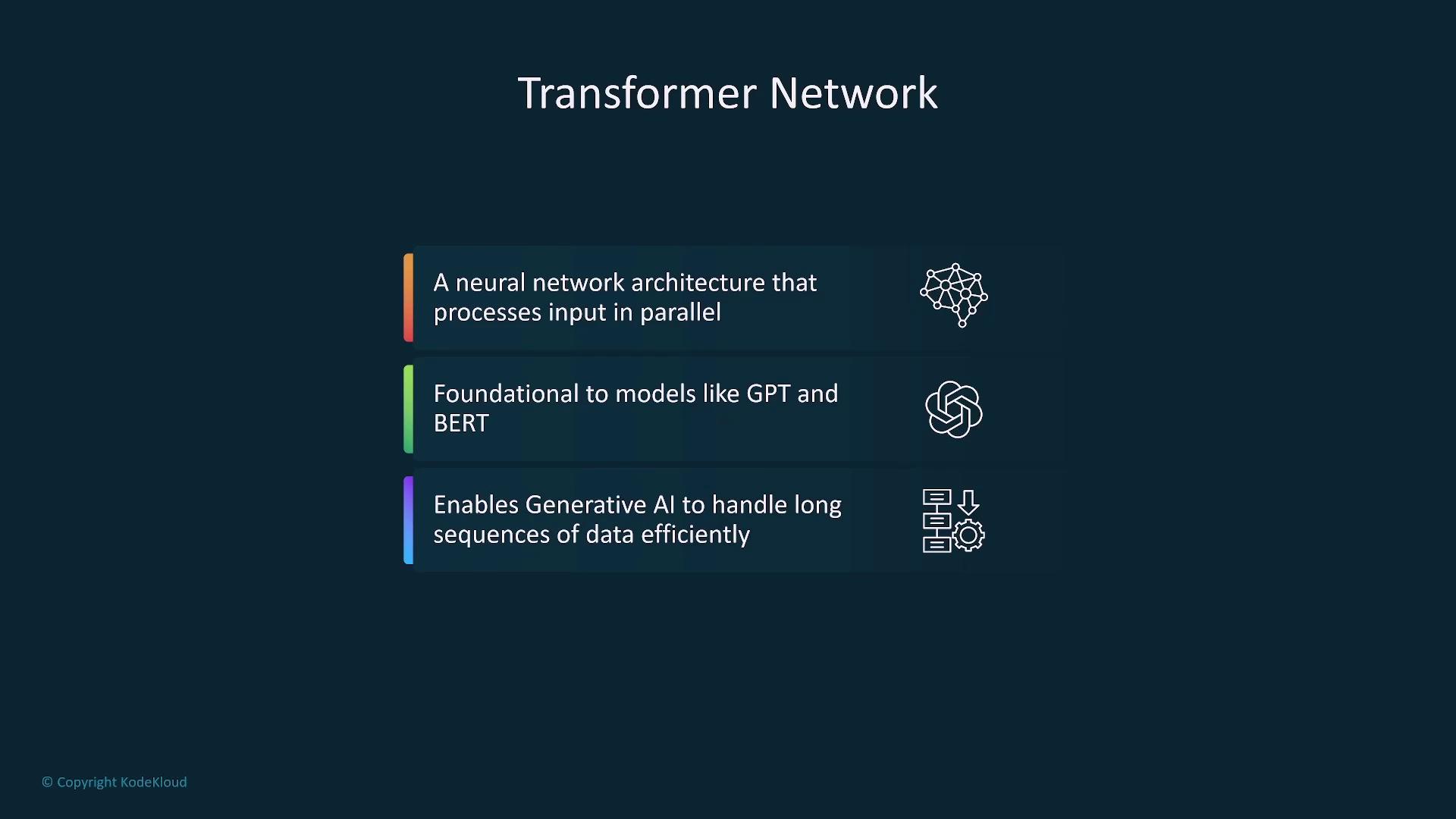
Context Windows
Transformers operate within a fixed-size "context window" that defines the model's capacity to remember and process input data. A larger window allows for handling more extensive or complex inputs—from a few sentences to entire book chapters—thereby preserving context and structure in the model's output.
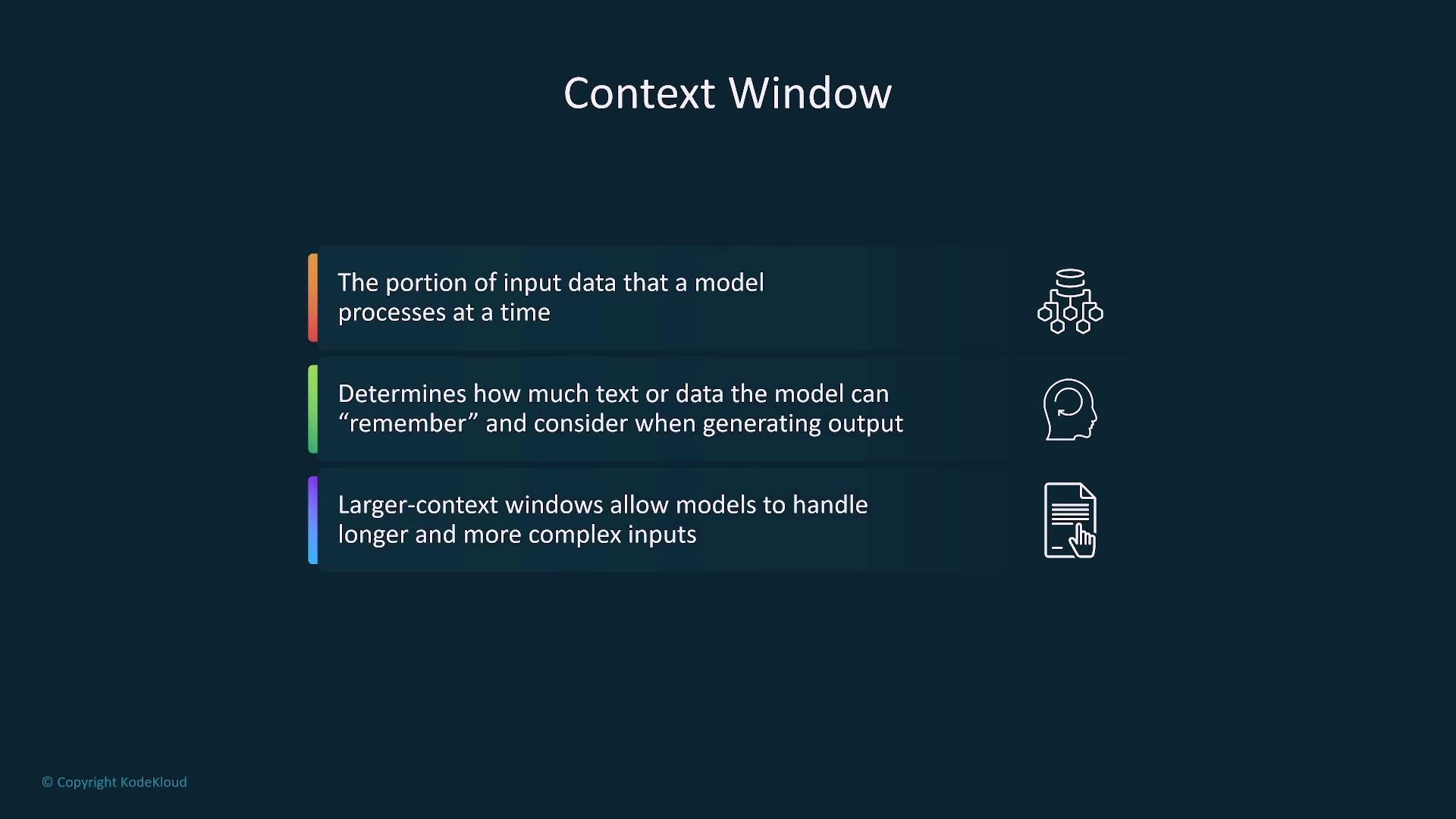
Tokens and Tokenization
Generative AI models work by breaking text into smaller units called tokens. This tokenization process converts text into sequences, which makes it easier for the model to analyze and predict subsequent tokens based on learned patterns.
Note
Tokenization is essential because the model does not understand complete sentences; instead, it operates on these smaller token units to generate coherent and contextually relevant outputs.
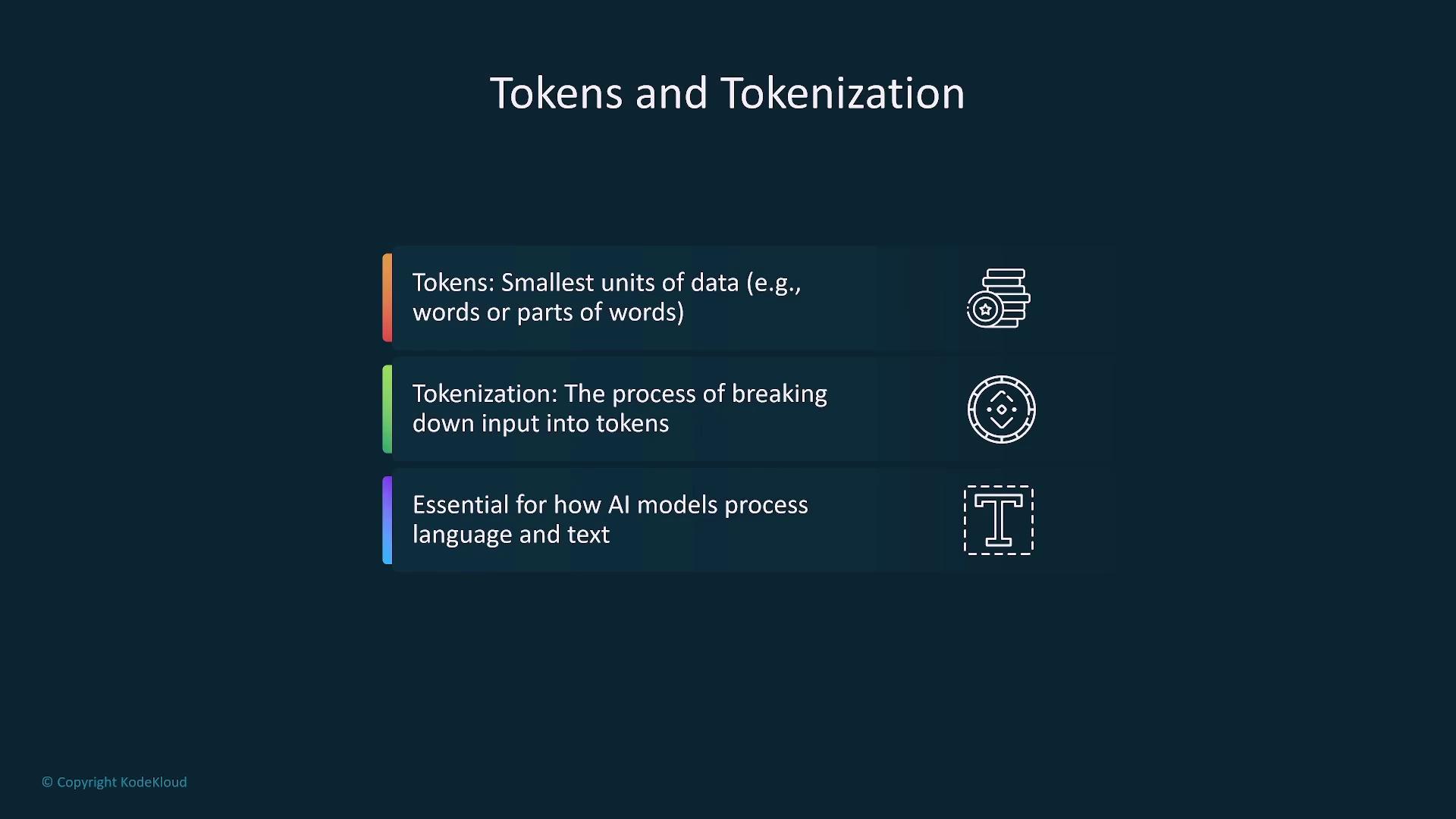
Embeddings and Vectors
Embeddings are numerical representations of tokens that capture the semantic meaning of words or phrases. Each token is encoded as a multidimensional vector, where words with similar meanings—like "do," "doing," and "done"—are positioned closer together in vector space. This numerical transformation is crucial for mathematical computations within AI models.
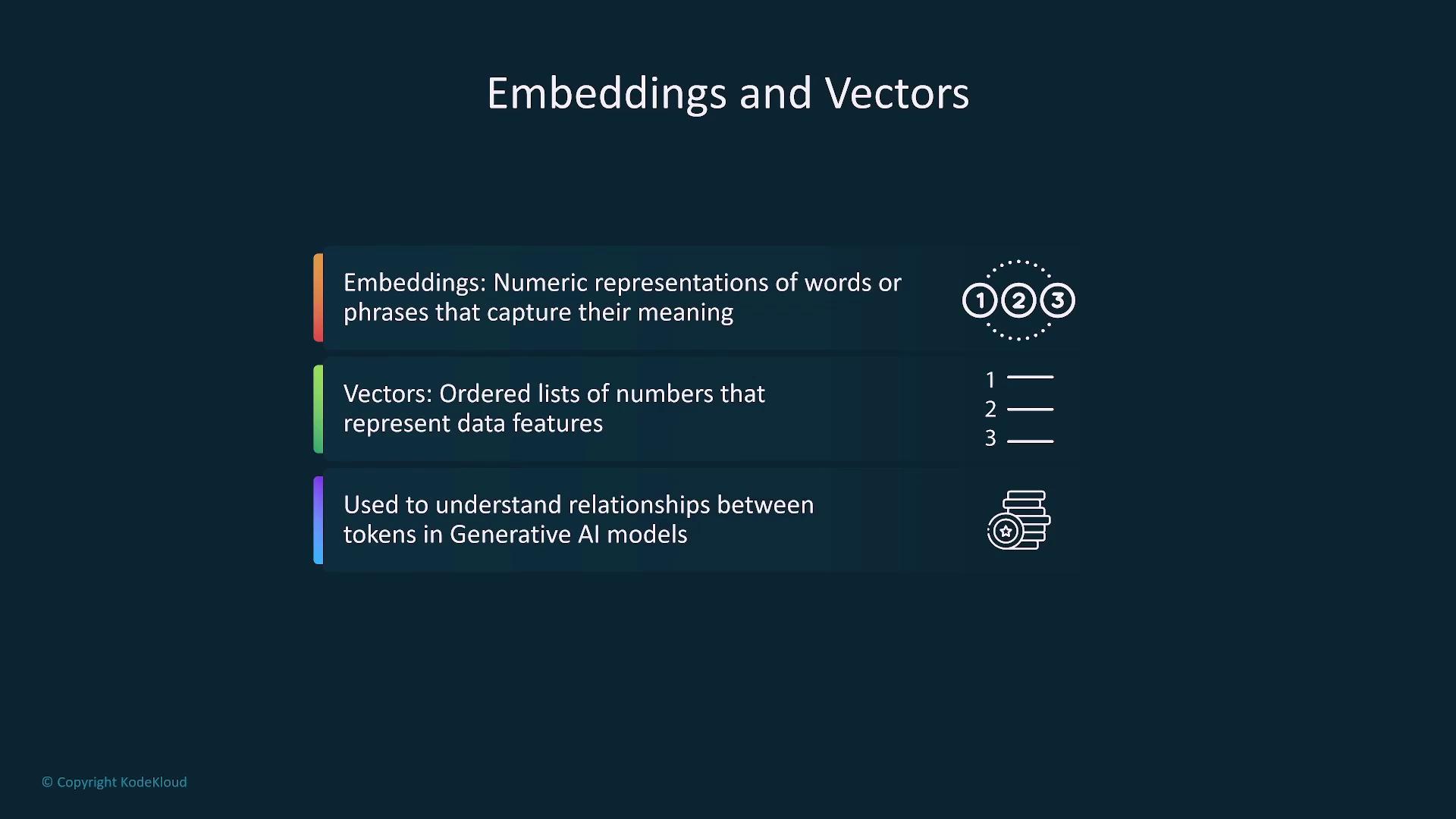
In addition to text, embeddings are applied to other data types such as images and videos, helping models understand complex multimodal relationships.
Chunking
Chunking is the process of breaking down extensive data into smaller, more manageable sections. For example, a large article about dog breeds might be segmented into chunks focused on individual breeds or specific breed characteristics.
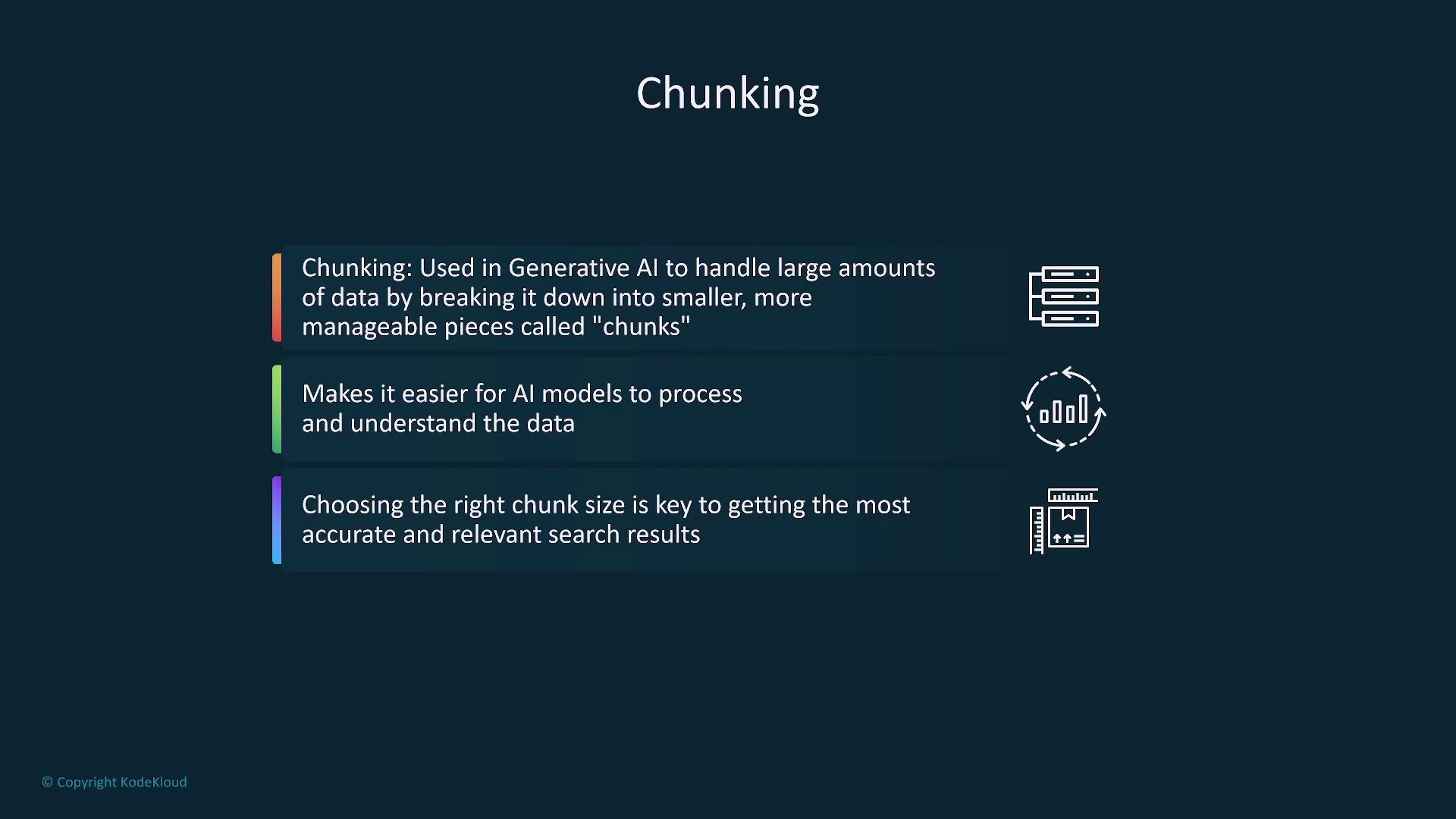
Choosing the appropriate chunk size is essential—smaller chunks often yield higher precision by narrowing the topic, while larger chunks provide broader context but might reduce relevance.
Large Language Models (LLMs)
Large Language Models, such as GPT and BERT, are based on transformer architectures and are trained on extensive text datasets. These models are highly versatile, capable of tasks like text completion, translation, and summarization, and they can generate human-like text from minimal examples.
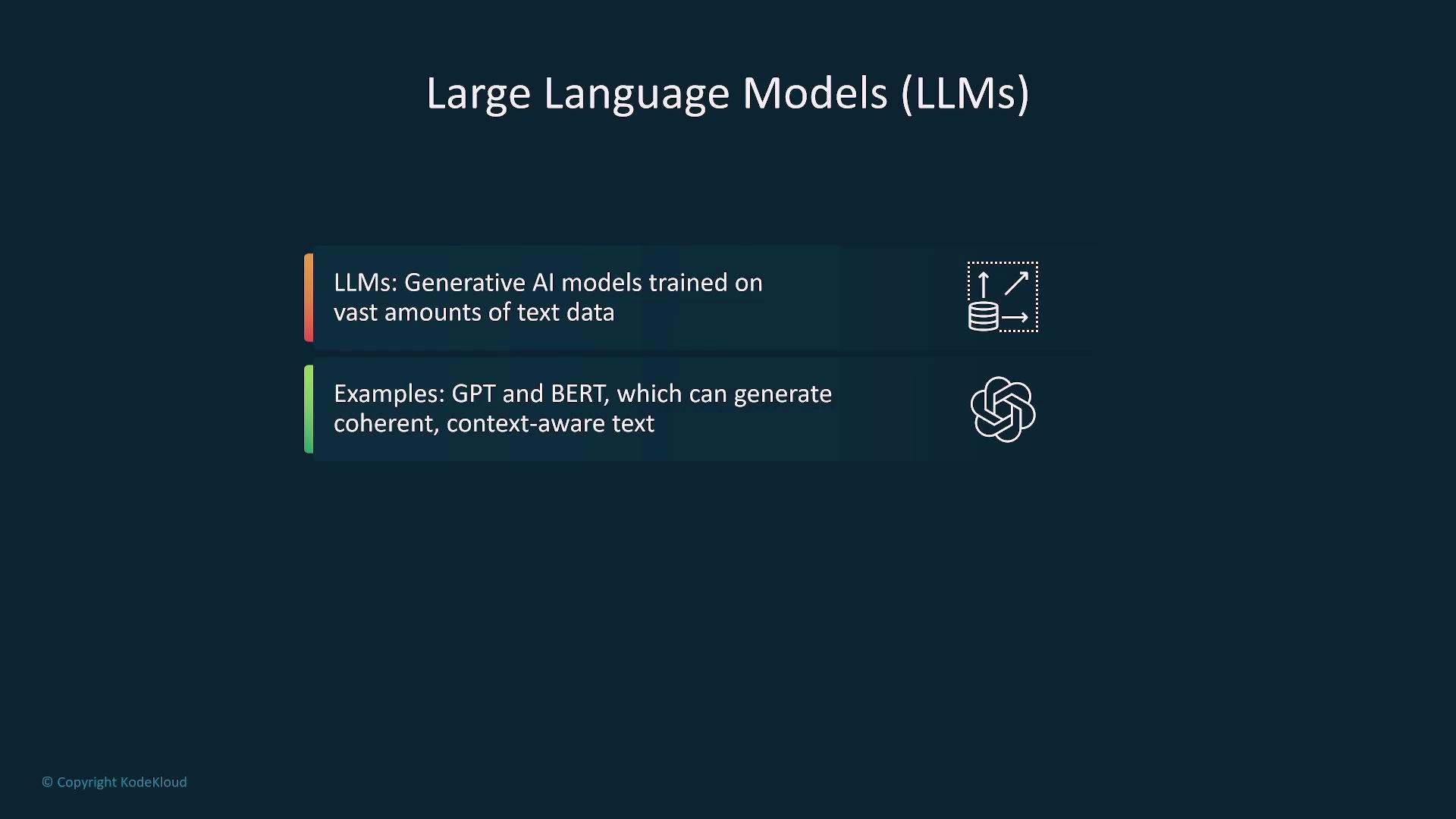
Prompt Engineering
Prompt engineering involves designing and refining the inputs provided to an AI model to guide the generation of desired outputs. The quality of the prompt has a direct impact on the model’s performance, especially given the constraints of its context window. Techniques in prompt engineering include:
- Zero-shot learning: Instructing the model to perform a task without providing any examples.
- One-shot learning: Offering a single example as guidance.
- Few-shot learning: Providing several examples to help the model understand and replicate the task.
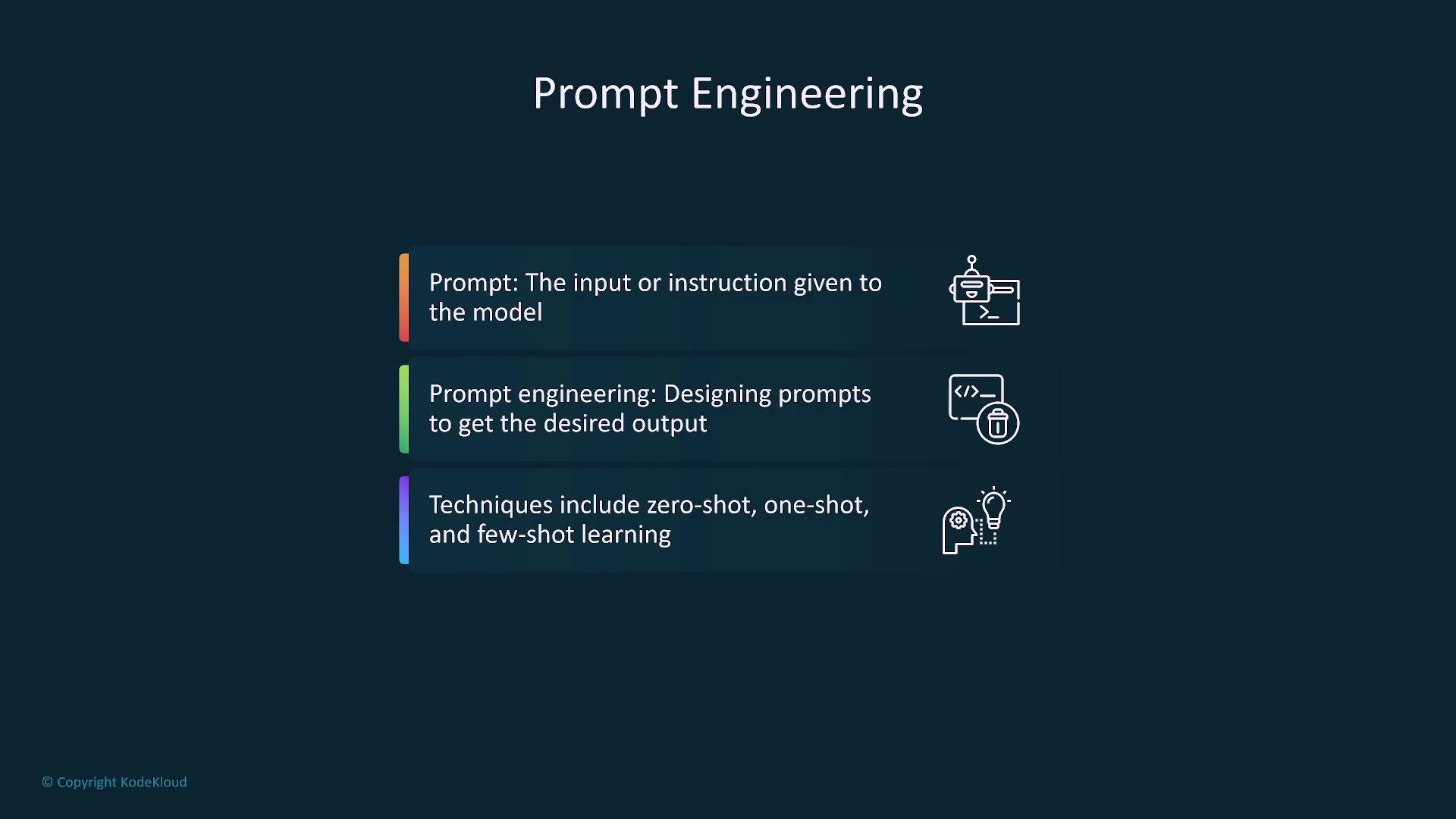
For instance, in zero-shot learning, a model might be tasked with classifying an unfamiliar object based solely on descriptive attributes, whereas one-shot and few-shot learning rely on one or a few examples to refine model output.
Multimodal Models
Unlike single-mode models that focus on one data type, multimodal models can simultaneously process and generate various forms of data—such as text, images, audio, and video. These models are adept at tasks like generating images from text descriptions, captioning images, and conducting complex multimedia analyses.
Diffusion models, a subset of multimodal models, are particularly known for generating high-quality visuals. They work by iteratively transforming random noise into coherent images, videos, or audio clips.
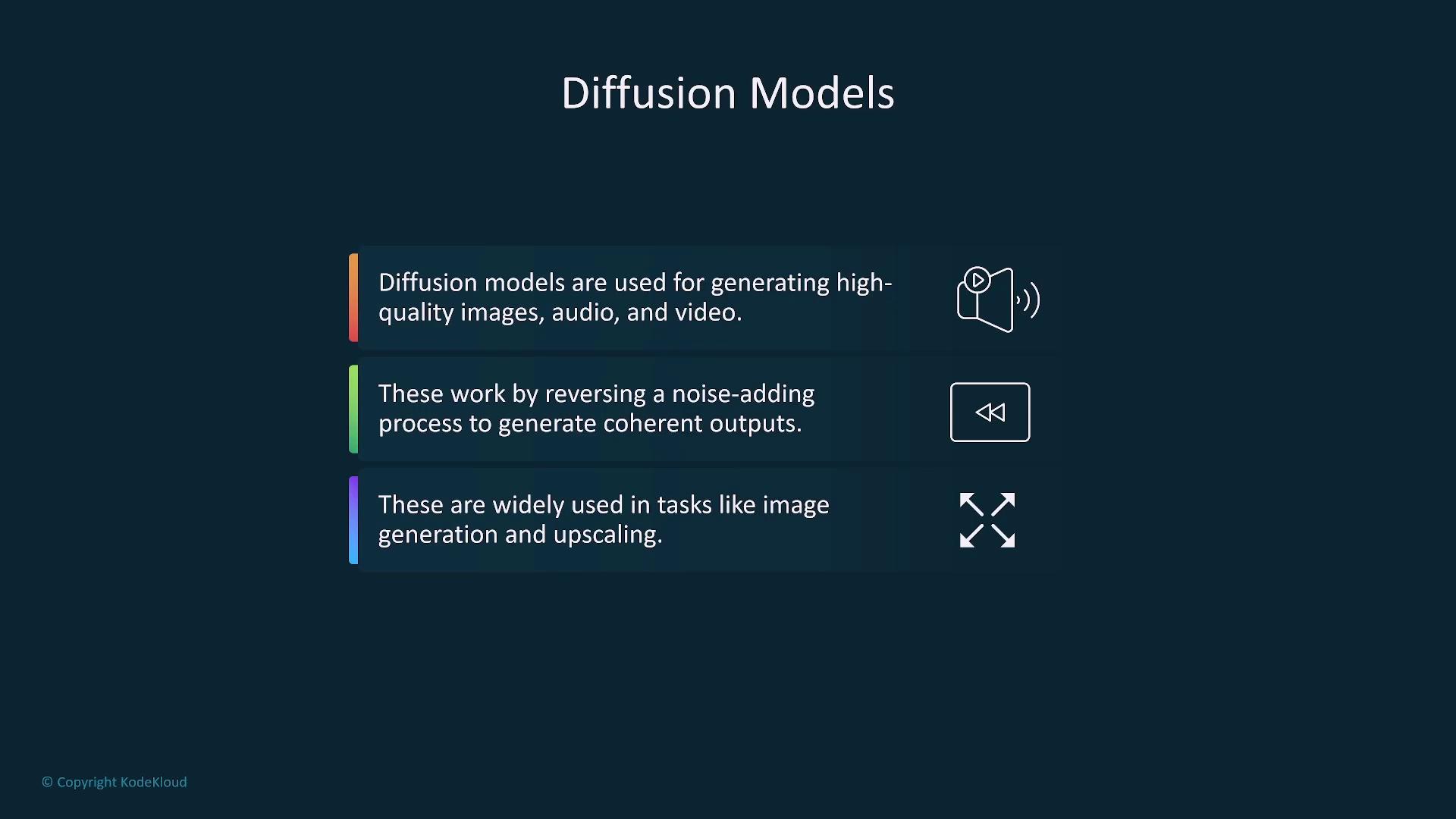
In creative industries, diffusion models like Stable Diffusion are gaining popularity for image generation, editing, and restoration due to their versatility and precision.
Conclusion
This lesson provided an overview of critical generative AI concepts, including large language models, transformer architectures, context windows, tokenization, embeddings, chunking, prompt engineering, and multimodal models. Each concept is fundamental to how generative AI creates original and coherent outputs from extensive datasets.
Before you proceed, we encourage you to take the end-of-section quiz to reinforce your understanding. We look forward to guiding you through the next lesson.
Further Reading
For additional insights on these topics, explore the Kubernetes Documentation, Docker Hub, and Terraform Registry.
Watch Video
Watch video content